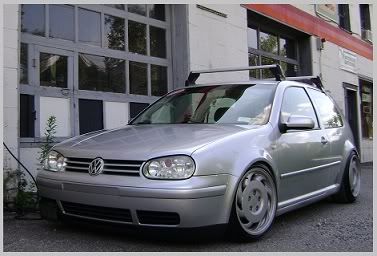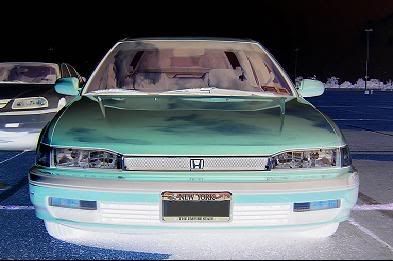Was just surfin the net when I found this. Seems pretty concise but lets see if you guys can add anything.
1976-1981
1976. It was our country's bicentennial, Jimmy Carter was elected president, "Rocky" was the big movie that year and Romanian gymnast Nadia Comaneci attained the first-ever perfect scores in Olympic gymnastics. Oh, and Honda introduced the Accord.
Joining the successful but diminutive Civic, the larger Accord was a smash success right away. Having felt the sting of an oil crisis a few years prior and realizing that, indeed, fossil fuel is a finite entity, Americans began seriously considering (and buying) small, economical cars. With the Civic, Honda had quickly established itself as a builder of a high-quality, fun-to-drive, dependable and fuel-stingy little car. The Accord took this concept to a higher level by offering more room, style and power while still being economical, reliable and easy to park.
Initially available only in two-door hatchback form, the Accord rode a 93.7-inch wheelbase, weighed about 2,000 pounds and sported a clean, uncluttered body style. The interior layout featured a combination of comfortable seating, logical control/gauge placements and high-quality switchgear. These characteristics would all become associated with Honda in the years to come. Another reason for the Accord's success was the car's generous standard equipment list (for the mid-1970s, anyway), which included features such as AM/FM stereo radio, rear defroster/wiper/washer and remote hatch release.
With an output of 68 horsepower, the Accord's 1.6-liter four-cylinder engine pales in comparison to some "economy" cars of today that have double this output from their four bangers. But remember, back in '76 many American V8s were struggling to put out 140 horses. A unique feature of the Accord's engine was Honda's CVCC head design that promoted cleaner, more efficient combustion. The CVCC design, introduced a year earlier on the Civic, did not require a catalytic converter nor unleaded fuel to meet emissions standards. Nearly every other U.S. market car underwent the change to exhaust catalysts and unleaded-only fuel requirements the year before. Transmission choice consisted of the standard, slick-shifting five-speed manual gearbox or a two-speed "Hondamatic" that blunted any attempts at peppy performance.
There were no changes in the Accord's sophomore year, 1977.
An LX version debuted in 1978 and had standard luxury accoutrements such as velour upholstery, air conditioning and a digital clock (the last item was a big deal back then). Accord's popularity grew rapidly as sales rose from 18,643 in 1976 to over 120,000 for 1978.
1979 saw the logical expansion of the Accord family with the addition of a four-door sedan, aimed to do battle with the likes of Toyota's Corona and Mazda's "new" 626. Though it shared the same platform and wheelbase as the two-door hatchback coupe, the sedan was nearly 9 inches longer due to the three-box body style. Unlike the coupe, the sedan came only in one trim level; an "LX" version was still five years away. The engine grew in size to nearly 1.8 liters and output went up to 72 horsepower. Other improvements included the addition of an oil cooler, power steering and a tachometer to the standard features list, a larger radiator and more efficient exhaust system.
Other than the optional automatic transmission having three speeds instead of the former two, and minor cosmetic upgrades, not much else changed for 1980.
In 1981 a full-blown luxury trim level, called the SE, was offered. Sending out the first- generation Accord in style, the SE stocked an Accord Sedan with leather seating, power windows and door locks, alloy wheels and a sound system with cassette deck. Though this may not seem like a big deal now, back in 1981 manual window cranks and vinyl seats were typical for small cars while leather seats were reserved for big American luxury cars or expensive European makes such as BMW.
As far as pricing went, a 1976 Accord was $3,995. By 1980 the base hatchback's price had gone up 50 percent, to $5,949, and the LX version was $1,000 more. The 1980 Accord Sedan was $6,515. Unfortunately for consumers, demand for the early Accords was greater than supply, so dealers would typically add a second window sticker next to Honda's. Appearing on this second sticker would be vastly overpriced dealer-added options such as pinstripes, mud flaps and rustproofing. And, as if this wasn't bad enough, sometimes this huge profit "tool" (the second sticker) wouldn't even show anything tangible being added to the car, just the letters "A.D.M.U" (which stood for Additional Dealer Mark-Up) or the words "Market Value Adjustment" followed by a dollar amount that could oftentimes exceed $1,000. Nonetheless, people were willing to pay a premium to drive this jewel of a small car.
1976-1981
1976. It was our country's bicentennial, Jimmy Carter was elected president, "Rocky" was the big movie that year and Romanian gymnast Nadia Comaneci attained the first-ever perfect scores in Olympic gymnastics. Oh, and Honda introduced the Accord.
Joining the successful but diminutive Civic, the larger Accord was a smash success right away. Having felt the sting of an oil crisis a few years prior and realizing that, indeed, fossil fuel is a finite entity, Americans began seriously considering (and buying) small, economical cars. With the Civic, Honda had quickly established itself as a builder of a high-quality, fun-to-drive, dependable and fuel-stingy little car. The Accord took this concept to a higher level by offering more room, style and power while still being economical, reliable and easy to park.
Initially available only in two-door hatchback form, the Accord rode a 93.7-inch wheelbase, weighed about 2,000 pounds and sported a clean, uncluttered body style. The interior layout featured a combination of comfortable seating, logical control/gauge placements and high-quality switchgear. These characteristics would all become associated with Honda in the years to come. Another reason for the Accord's success was the car's generous standard equipment list (for the mid-1970s, anyway), which included features such as AM/FM stereo radio, rear defroster/wiper/washer and remote hatch release.
With an output of 68 horsepower, the Accord's 1.6-liter four-cylinder engine pales in comparison to some "economy" cars of today that have double this output from their four bangers. But remember, back in '76 many American V8s were struggling to put out 140 horses. A unique feature of the Accord's engine was Honda's CVCC head design that promoted cleaner, more efficient combustion. The CVCC design, introduced a year earlier on the Civic, did not require a catalytic converter nor unleaded fuel to meet emissions standards. Nearly every other U.S. market car underwent the change to exhaust catalysts and unleaded-only fuel requirements the year before. Transmission choice consisted of the standard, slick-shifting five-speed manual gearbox or a two-speed "Hondamatic" that blunted any attempts at peppy performance.
There were no changes in the Accord's sophomore year, 1977.
An LX version debuted in 1978 and had standard luxury accoutrements such as velour upholstery, air conditioning and a digital clock (the last item was a big deal back then). Accord's popularity grew rapidly as sales rose from 18,643 in 1976 to over 120,000 for 1978.
1979 saw the logical expansion of the Accord family with the addition of a four-door sedan, aimed to do battle with the likes of Toyota's Corona and Mazda's "new" 626. Though it shared the same platform and wheelbase as the two-door hatchback coupe, the sedan was nearly 9 inches longer due to the three-box body style. Unlike the coupe, the sedan came only in one trim level; an "LX" version was still five years away. The engine grew in size to nearly 1.8 liters and output went up to 72 horsepower. Other improvements included the addition of an oil cooler, power steering and a tachometer to the standard features list, a larger radiator and more efficient exhaust system.
Other than the optional automatic transmission having three speeds instead of the former two, and minor cosmetic upgrades, not much else changed for 1980.
In 1981 a full-blown luxury trim level, called the SE, was offered. Sending out the first- generation Accord in style, the SE stocked an Accord Sedan with leather seating, power windows and door locks, alloy wheels and a sound system with cassette deck. Though this may not seem like a big deal now, back in 1981 manual window cranks and vinyl seats were typical for small cars while leather seats were reserved for big American luxury cars or expensive European makes such as BMW.
As far as pricing went, a 1976 Accord was $3,995. By 1980 the base hatchback's price had gone up 50 percent, to $5,949, and the LX version was $1,000 more. The 1980 Accord Sedan was $6,515. Unfortunately for consumers, demand for the early Accords was greater than supply, so dealers would typically add a second window sticker next to Honda's. Appearing on this second sticker would be vastly overpriced dealer-added options such as pinstripes, mud flaps and rustproofing. And, as if this wasn't bad enough, sometimes this huge profit "tool" (the second sticker) wouldn't even show anything tangible being added to the car, just the letters "A.D.M.U" (which stood for Additional Dealer Mark-Up) or the words "Market Value Adjustment" followed by a dollar amount that could oftentimes exceed $1,000. Nonetheless, people were willing to pay a premium to drive this jewel of a small car.










Comment